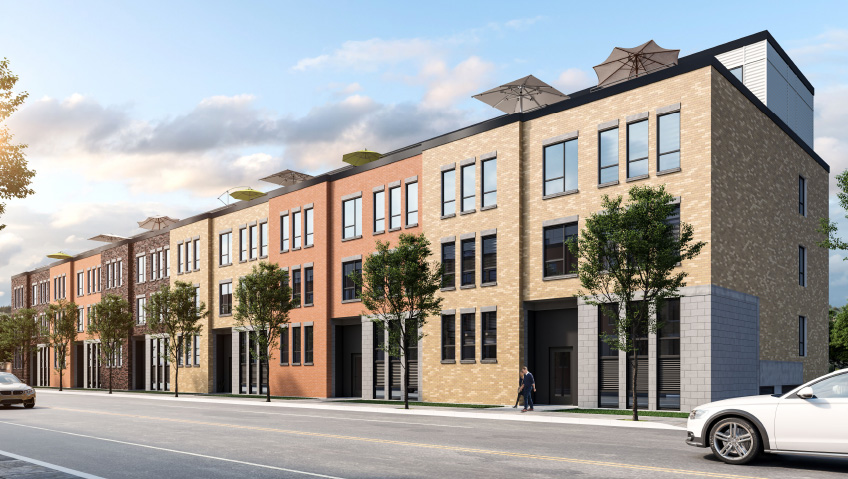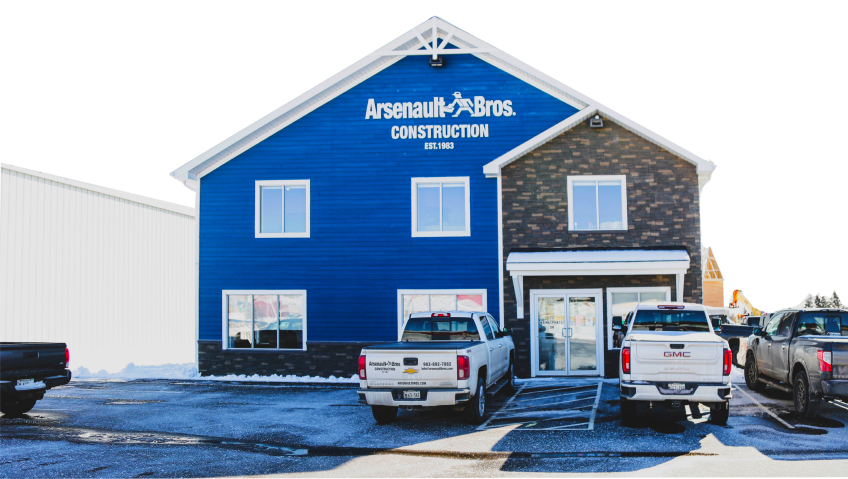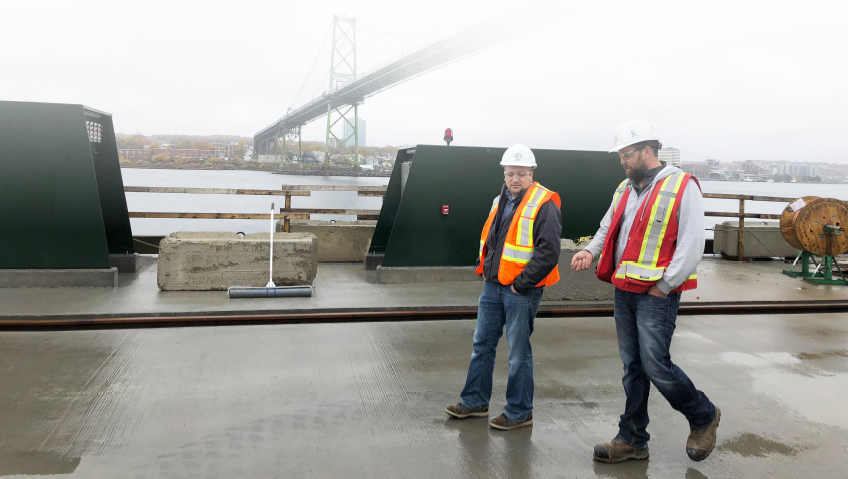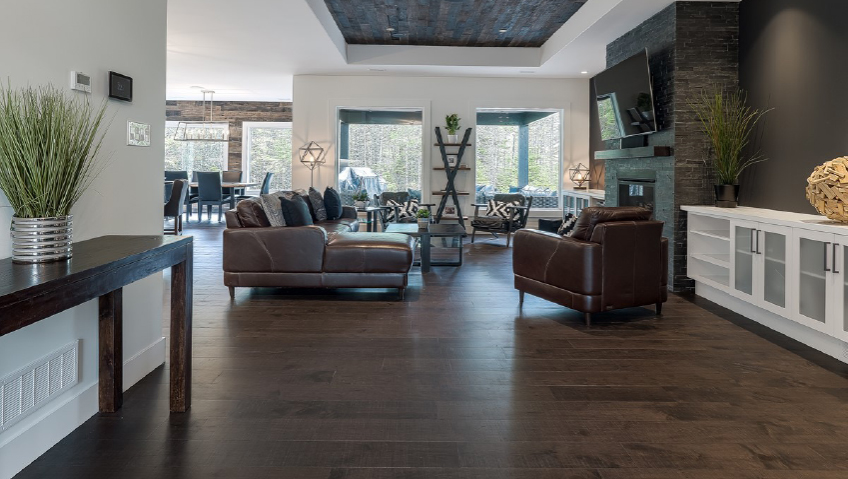Looking back on his long career in Montreal’s construction and real estate industries, Sam Scalia is proud of the role Samcon Inc. has played in transforming the city for the benefit of condominium buyers and neighbourhoods alike.
Over 30 years since his first success—an eight-unit condo on an infill site on Le St-Christophe—Samcon has completed about 85 projects, creating over 5,000 condo units for first and second-time buyers, couples, families and retirees.
Before founding Samcon, Scalia had learned plenty about the building industry from his family. Sam’s father came to Canada from Italy in 1952 and took on landscaping work in the construction world. Sam’s uncle became a builder, starting with residential housing in Montreal’s Villeray area in 1956.
When Sam’s father, the youngest of four brothers, joined his brother almost a decade later, the family Scalia set about erecting buildings of apartments to rent on infill sites in different districts of Montreal.
“My dad had been doing it since I was born, and that sort of enticed me,” says Sam, who was introduced to the construction world at a young age. In the late 1980s, Sam worked with his father for a time. In 1991, with his support, he created his own project.
Company President Sam was just in his twenties. “It happened, and luckily it was a success,” says Sam of Le St-Christophe. The land upon which this landmark work would be built was a landfill and the former site of two duplexes that had burned down.
For Sam and his team, the biggest challenge was dealing with the crippling recession. “Of the 30 years I’ve been in business, that was the worst recession we’ve ever seen. Even today they say we’re going into a recession, but it’s no comparison to 1991, a drastic, very serious recession.”
Building on success
With his first project completed, Scalia moved on to larger and more challenging works, including a 16-condo project, then a 37-unit work, followed by a 60-unit condominium. Life kept moving forward as Sam got married, and his father retired.
Fostering a reputation in Montreal for quality, Samcon was picking up praise from both buyers and the building industry. In 1999 alone, Samcon received three Domus prizes for Builder of the year: New housing units from $100,000 to $175,000, and New housing units less than $100,000. This recognition of project excellence soon led to Samcon taking on joint ventures (JVs) with qualified investors, and to rapid growth.
Instead of one to three low-rise projects of about 24 to 75 units on infill sites, the company began doing about 15 works at the same time with JV partners and a network of marketing and sales support.
Paying it forward
Winning dozens of awards including four-time Project and/or Residential Development of the Year, Multifamily, Customer Choice, and Builder of the Year, Samcon believes in sharing its successes.
The company credo appears on its website: “Samcon is inspired by the ideal of an island where life is good. Since its beginnings, Samcon has extended this ideal outside of its job sites by giving to many associations and foundations that contribute to the well-being of our population.”
Just some ways Samcon and the Scalia family have given back include donations of $100,000 to the Westmount Recreation Centre and $100,000 to the Institut des recherches cliniques de Montréal (IRCM) Foundation.
Recognizing the importance of learning, Scalia created an education endowment and is part of an association giving 70 bursaries of about $2,500 every year to students in financial need heading off to university.
With about 20 donors, the endowment fund is at $1.25 million and growing. “It’s building up slowly because we’ve raised a lot of money individually and with other people,” he says. “It’s amazing because the endowment is perpetual, and it’s going to help students get education for years and years.”
Hospitals, cancer research, Concordia University, and McGill University—which has a classroom in the company’s name—are other recipients of Scalia and Samcon giving back to the city they love.
For Scalia, one of his proudest moments came in 2011, when he was a recipient of the Queen Elizabeth II Silver Jubilee Medal, recognizing recipients for their devoted service and esteem among other qualities. “It was quite impressive to get that award; I was very happy with that one!” he says.
Strength in numbers
Internally, Samcon operates with a strong, dedicated management team; externally, the company has fostered relationships with loyal partners including the best subcontractors and salespeople in the business.
And with a license to build, the company has also hired its own superintendents and project managers. “What makes a Samcon employee?” asks Scalia. “I think it’s a commitment to quality products, good after-sales service and support for buyers, and loyalty to subcontractors and suppliers.”
Working with many of the same people for the past three decades, Samcon has even stayed loyal to the same banks for the last 31 years.
Dedicated employees, trustworthy contractors, and of course loyal buyers—some of them repeat buyers—have earned Samcon a good deal of success in Montreal’s condo sector. Since the 1990s the company has navigated the ups and downs of the economy, wildly changing interest rates, good years and bad, and keeps marching on.
The early 2000s was a time of strong growth, which saw Samcon venture from low- to mid-rise projects, which were new to the company. In the following years, Samcon took on several eight-storey concrete buildings, including one in the heart of Montreal’s downtown on René Lévesque Boulevard. This led to a successful 15-storey building, and 23- and 25-storey projects.
“Today, we‘re more focused on the low-rise business, because it is truly our core expertise,” says Scalia. “We enjoy doing mid- and high-rise, and are fortunate to have done the great projects that we did. But at this point, running about ten sites, most are low- and mid-rise.”
Realizing the impact construction has on the environment, with construction being a major source of world carbon emissions, Samcon is actively exploring alternatives to heavy and costly concrete and steel. This includes glued laminated timber, better known as Glulam. Versatile, attractive, and lighter to transport, these engineered wood beams surpass steel’s strength pound-for-pound and can be formed in many shapes and sizes. These attributes make Glulam ideal for mid-rise mass timber construction.
The move to mass timber
Builders can take on projects up to six floors utilizing light wood frame—two by four and two by six. But utilizing mass timber, often called cross-laminated timber (CLT), they can go up to twelve floors. “These are wood slats,” explains Scalia, “but they’re practically as strong as concrete. They’re made out of wood and a glued system that’s ‘across’. This system is slowly taking over the world, but it’s kind of quiet in Canada. In the U.S. there are a lot of projects, about 2,000. And in Scandinavian countries, concrete is almost eliminated: if it’s below twelve storeys, there are almost no concrete buildings being built.”
The shift away from concrete and steel to more sustainable Glulam and CLT is accelerating, but it’s a learning curve. “We are trying,” Scalia says. “It’s not so easy when you’ve had an entire industry working the same way for over 100 years. It’s a bit like electric cars: it takes a while before things change, but this is the future.”
Currently working on a site using CLT, Scalia recently visited a 19-storey CLT building in Vancouver and was impressed. “It’s faster and it’s lighter,” he says. “If we sometimes have certain soil conditions that are not optimal to capacity, CLT is a much better solution because the weight is about one-quarter the weight of concrete.”
Building for the future
Along with Glulam and CLT, Samcon is incorporating other materials and equipment which are kinder to the environment and better for customers. All company dryers are now heat pump dryers, which use about 70 percent less electricity than normal dryers, and are more efficient.
Buildings are very well-insulated with R24 comfort levels, reducing energy consumption. Recently, Samcon completed its first project using triple-pane windows. Some concrete materials are being replaced with acoustic boards made using rubber from recycled tires.
“We’re helping the planet, and these are things we are exploring to become more environmentally conscious,” says Scalia. “The future of Samcon is to concentrate on what we’ve always done well and improve it in every way we can.” Concentrating on low- and mid-rise infill urban sites for the time being, Scalia hasn’t ruled out future high-rise works.
“If I look at all the developers, not many have been here 30 years,” Scalia says. “Eighty percent haven’t; that’s the type of industry it is. We’ve been here for 30 years, and we want to keep doing the same thing. We want to keep doing it better.”






